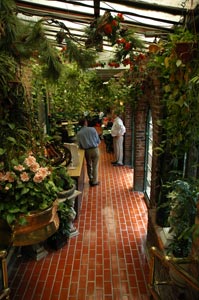|
|||
|
Different Focal Lengths Explained There are many different lenses that are available for many different types of cameras and most of these lenses differ in either their aperture size or their focal length. We will be discussing focal lengths here. Essentially, there are three different types of focal lengths: wide angle, telephoto, and normal. A normal lens is considered to have the 50mm focal length and it is said to most closely mimic what the human eye sees. The following picture is shot at the 50mm focal length: 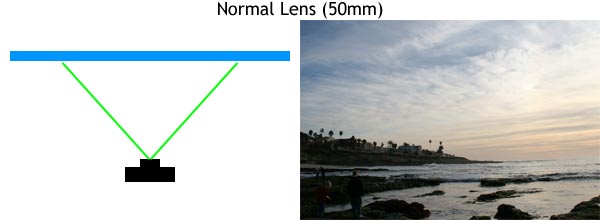 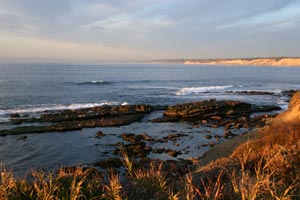 Wide angle lenses are lenses that have a focal length below 50mm and they have a wider field of view than a conventional 50mm lens. They are generally used for landscapes or street photography. 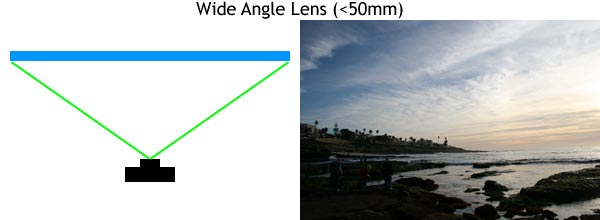
Conversely, telephoto lenses have a focal length above 50mm and they will get you closer to the action. Photographers who shoot sports, portraits, or wild animals will always carry a telephoto lens with them. 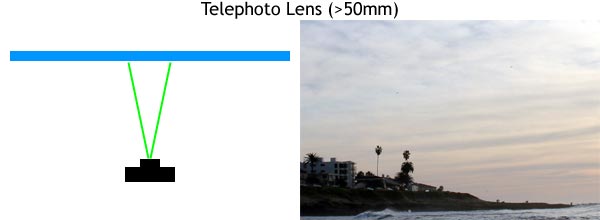  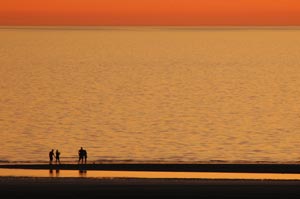 Summary: 50mm = normal. Less than 50mm = wide angle. Greater than 50mm = telephoto. What Focal Length Does to Your Photograph Different focal lengths do different things. A wide angle lens makes the viewer feel like he or she is inside the picture and it immerses them in the scene because of the way the lens distorts the image. Don't use a wide angle lens to take a portrait because it'll make that person's nose look really big! On the other hand, telephoto lenses tend to make things look closer together, something called compression. They are often used for portraits (ideal portrait length is 70mm-135mm). 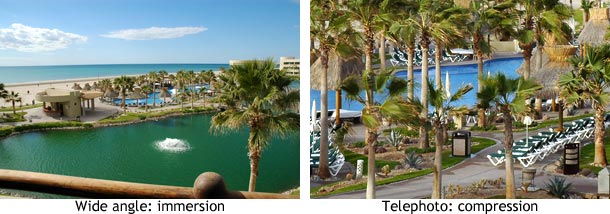 Summary: Wide angle = immersion; telephoto = compression. Focal Lengths and Digital SLR Crop Factor Most digital SLR (single lens reflex) cameras on the market have what is known as a crop factor. Namely, the size of their sensor (APS-C 22mm x 15mm sensor) is smaller than the size of 35mm film (36mm x 24mm), so the center portion of what the lens captures is used and the outside boundaries are unused. This makes your lenses longer (more telephoto) than what they really are by a factor of either 1.5, 1.6, or 2.0 depending on what brand your camera is. In order to calculate what your actual focal length is on a digital SLR, multiply your lens's focal length by the crop factor (most likely 1.5 or 1.6 unless you use Olympus). That means that a 50mm lens normal will become a 75mm~80mm telephoto lens. Unless you paid big bucks, you probably won't get a full frame dSLR with a sensor that is the same size as 35mm film. 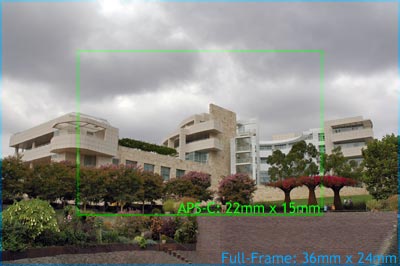 Summary: Most digital SLRs have a crop factor that needs to be taken into account. |
|||
Back to Main Digital camera help, tips on digital cameras, and camera techniques. Canon Powershot camera help and Nikon digital camera tips. Canon SLR and Canon camera tutorials. Nikon SLR, Panasonic, Casio, and Pentax digital camera technique. All content on these pages are Copyright 2007-2011 Yu Jiang Tham. No content from this website may be used or duplicated without express permission from the owner. Please email support@facethelight.com for more information. FaceTheLight.com is part of The Happywalrus Network - Get Free Stuff and Make Money! |

